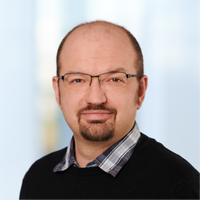Effertz Group
Mechano-Electrical Transduction in the Inner Ear Research Group
Hearing encompasses the reception, translation and subsequent perception of acoustic signals. Acoustic signals, or sound, possess two major attributes: i) sound particle velocity (m/s) and ii) sound pressure (dB SPL). While sound particle velocity disperses rapidly with distance to the source, sound pressure can travel large distances in the form of oscillating pressure waves. Where i.e. insects can possess sound particle velocity and/or pressure sensitive ears, vertebrates only possess sound pressure sensitive ears. In general terms, sound particle velocity sensitive ears are only seen were short range acoustic signalling is employed, where sound pressure sensitive ears premise a certain animal size and are utilized for short to long range acoustic signalling.
Regardless of the type of ear, the key-step of sound perception is the translation of mechanical forces into electrochemical signals. This process, termed mechano-electrical-transduction (MET), is performed by dedicated MET-channels. MET-channels allow for the inflow of cations into sensory cells, depolarizing those cells in the process, and resulting in either neurotransmitter release (vertebrates) or the firing of action potentials (insects).
We utilize insect (Drosophila melanogaster)and mammalian model organisms (mice/rats) to understand the inner workings of MET. Our goal is to decipher how structures, cells and processes have been specialized during evolution to achieve the high sensitivity and fidelity we find today in hearing organs. To achieve said goal, we employ the following methods and techniques:
We closely collaborate with groups of the InnerEarLab and other groups at the University of Göttingen and beyond.

 https://orcid.org/0000-0002-4993-7887
https://orcid.org/0000-0002-4993-7887